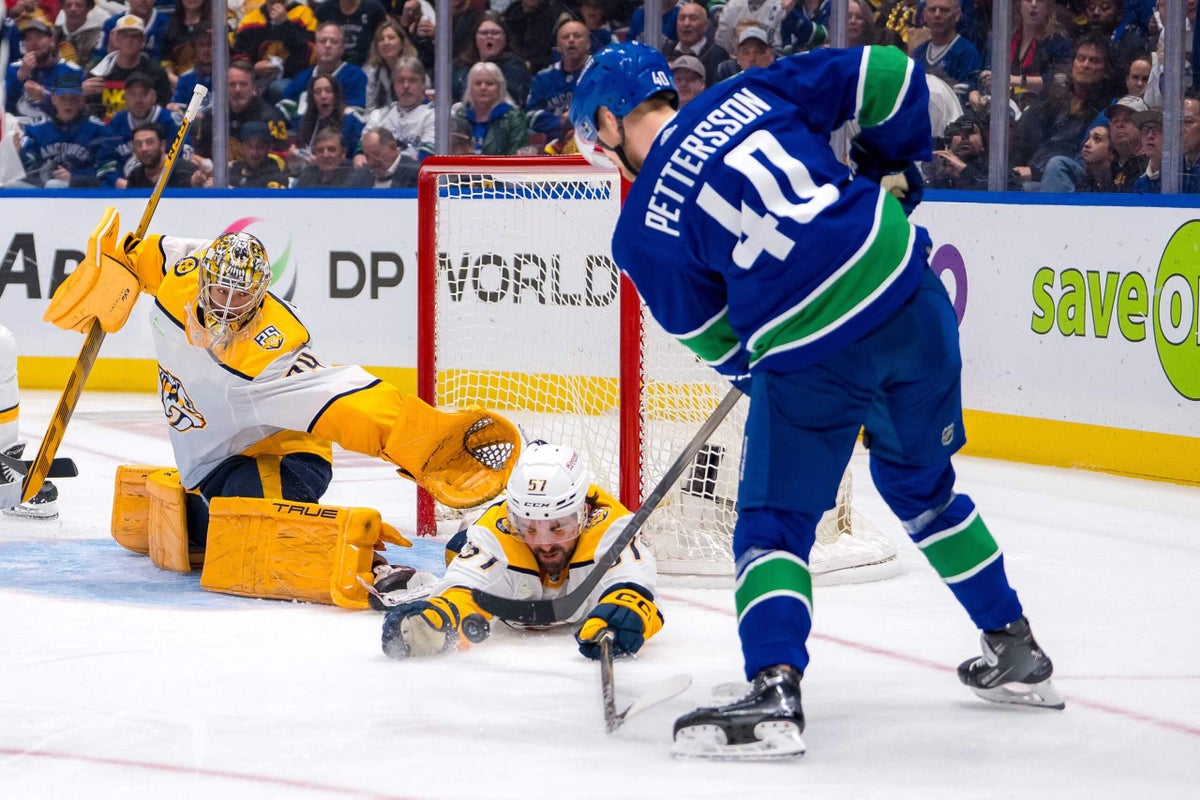Let’s do another round of Cap Court. You know the drill by now: Five players, five dicey contracts (from a team perspective), five arguments over whether the deal is actually bad enough to be “bad.”
Today, we’ll cover a perplexing goaltender, a one-time sure thing who may have peaked as a rookie and two players recently traded away by the Senators. But we’ll start with what I believe may be the single biggest contract in terms of total dollars we’ve ever tackled in this column…
Elias Pettersson, Vancouver Canucks
The details: Elias Pettersson, 26, just finished the first year of his eight-year extension, which runs through 2032 and carries a cap hit of $11.6 million.
The case that it’s a bad contract: He had 15 goals and 45 points last year.
Really, we could just end this section there. Pettersson signed his deal in March 2024, when he was in the midst of an up-and-down season but just one year removed from having 102 points. He got the sort of deal you give to an undisputed No. 1 center who’ll be solidly in the Hart Trophy mix. Then, well, he had 15 goals and 45 points last year.
Yes, there’s more to the story, including way too much off-ice drama. The team tried to address that by moving on from J.T. Miller, but it didn’t seem to help. A new offseason approach might. But it’s also possible the Canucks made a monster commitment to a player who’s just broken. And if so, they’re kind of screwed.
Oh, and as of July 1 he has a full no-move clause. If there was any chance to bail out, that ship has now sailed.
The case that it might be OK: In the two previous seasons, 2022-23 and 2023-24, Pettersson ranked 10th in league scoring with 191 points, ahead of guys like Sidney Crosby, Mitch Marner and Kirill Kaprizov. Yes, last season was a disaster, but it was one season. This is a contract my colleague Thomas Drance called “stunningly team-friendly” when it was signed, and he wasn’t alone in liking it. Maybe we all just take a deep breath, chalk up last year as a messy outlier due to all the Miller stuff, and remember that this guy has already shown us he can be elite. It’s not a projection or a best-case hope — we’ve actually seen it. We just need to figure out how to see it again.
And as for that NMC … well, if things are as bad for Pettersson in Vancouver as they seemed last year, let’s just say it probably won’t be a big issue.
Key comparables: We mentioned Marner, who just signed for $12 million and is a bit older. So is William Nylander, who makes $11.5 million, and those guys are both wingers. So are Mikko Rantanen ($12 million) and David Pastrnak ($11.25 million). The list of centers who are signed long-term is actually an oddly short one: it’s basically the MVP-tier of Leon Draisaitl, Auston Matthews and Nathan MacKinnon, then a drop-off down to Pettersson. At least until Connor McDavid resets things over the next year.
The ruling: It’s not hopeless. But it’s sure not good, and figuring out how to get Pettersson back to his 100-point level has to be the Canucks’ second-biggest priority over the next few years, behind only the Quinn Hughes extension. The problem here is the best-case is that they fix him, and the contract is fine or maybe even borderline good. The worst-case is… well, we saw it last year, and it’s terrifying. For now, it’s absolutely a bad contract.
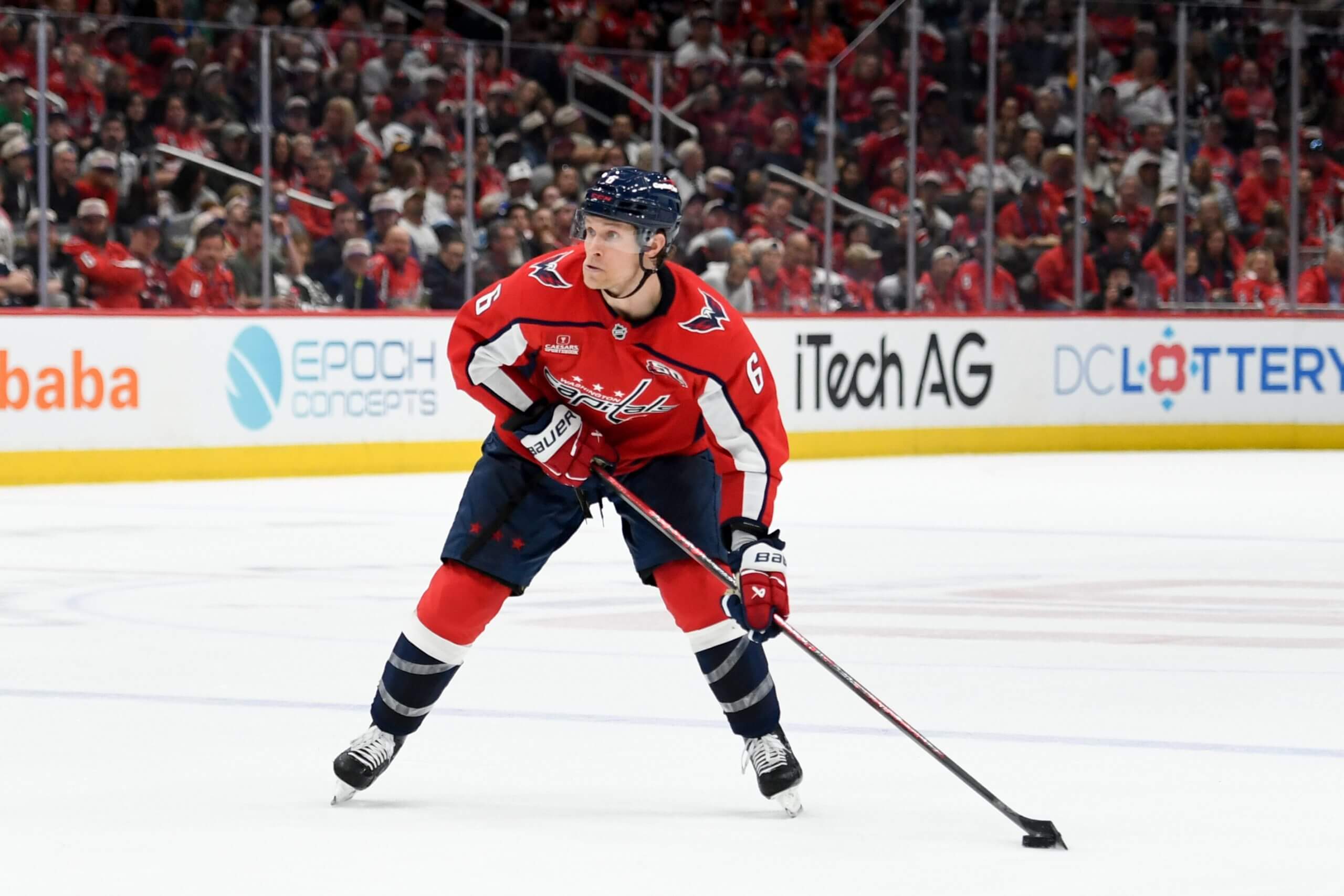
Jakub Chychrun signed a max extension with the Capitals after his first season in Washington. (Hannah Foslien / Getty Images)Jakob Chychrun, Washington Capitals
The details: In March, Jakob Chychrun, 27, signed an eight-year extension carrying a $9 million cap hit. The deal kicks in for this coming season and runs until 2033.
The case that it’s a bad contract: Chychrun was acquired by the Capitals in a blockbuster trade during the 2024 offseason, then played well in his debut season in Washington. That sounds like good news, but long-term readers know where this is going: it’s the classic setup for a Shiny New Toy deal, the single most dangerous contract in the NHL. A team gives up good assets to land a player, which strips them of any leverage in negotiating a contract, so they overpay to make sure the new guy isn’t one-and-done. Sometimes it still works out. Sometimes you get the Jonathan Huberdeau extension.
Chychrun’s deal makes him the 13th highest-paid defenseman by cap hit heading into next season. He’s one of only seven defensemen in the league with a deal stretching through 2033, and of that group his cap hit is second only to Noah Dobson and only Jaccob Slavin and Aaron Ekblad aren’t at least two years younger. It’s basically a “No. 1 defenseman” type of commitment for a player who’s only had Norris Trophy votes in two of his nine seasons and never finished higher than tenth.
The case that it might be OK: One of those Norris vote years was last season, his first in Washington. Granted, he got exactly one fifth-place vote to finish 17th, but the point is he fit in nicely with the Capitals, scoring a career-high 20 goals. And as you may have heard, that Capitals team did pretty well, so keeping the group together makes sense.
It’s also worth mentioning that Chychrun’s career has seen its share of games missed due to injury, but he played 74 games last year after playing all 82 the year before in Ottawa. Some guys are injury-prone and always will be, but some guys just have some bad luck along the way, and if Chychrun can be a full-season force, the Caps are in good shape, especially once John Carlson’s deal comes off the books next summer.
Key comparables: As with any defenseman, the first thing to do is mention Cale Makar making just $9 million for two more years, and the second thing is to toss that comparison away because it’s an outlier. More fitting names would include fellow 27-year-olds Charlie McAvoy ($9.5 million through 2030) and Adam Fox ($9.5 million through 2029), which don’t favor Chychrun. But there’s also two older guys in Seth Jones ($9.5 million through 2030) and Darnell Nurse ($9.25 million through 2030), plus Ivan Provorov ($8.5 million through 2032). If you’re a Caps fan, do those names make you feel better, or are they cautionary tales?
The ruling: There are warning signs here, and the reality is that the Caps didn’t seem to get much of a discount by going max-term on an older player. But given how much leverage was on the player’s side, the team didn’t completely overcommit. Until we see how the blue-line market settles into the rising cap era, I don’t think it’s a bad contract.
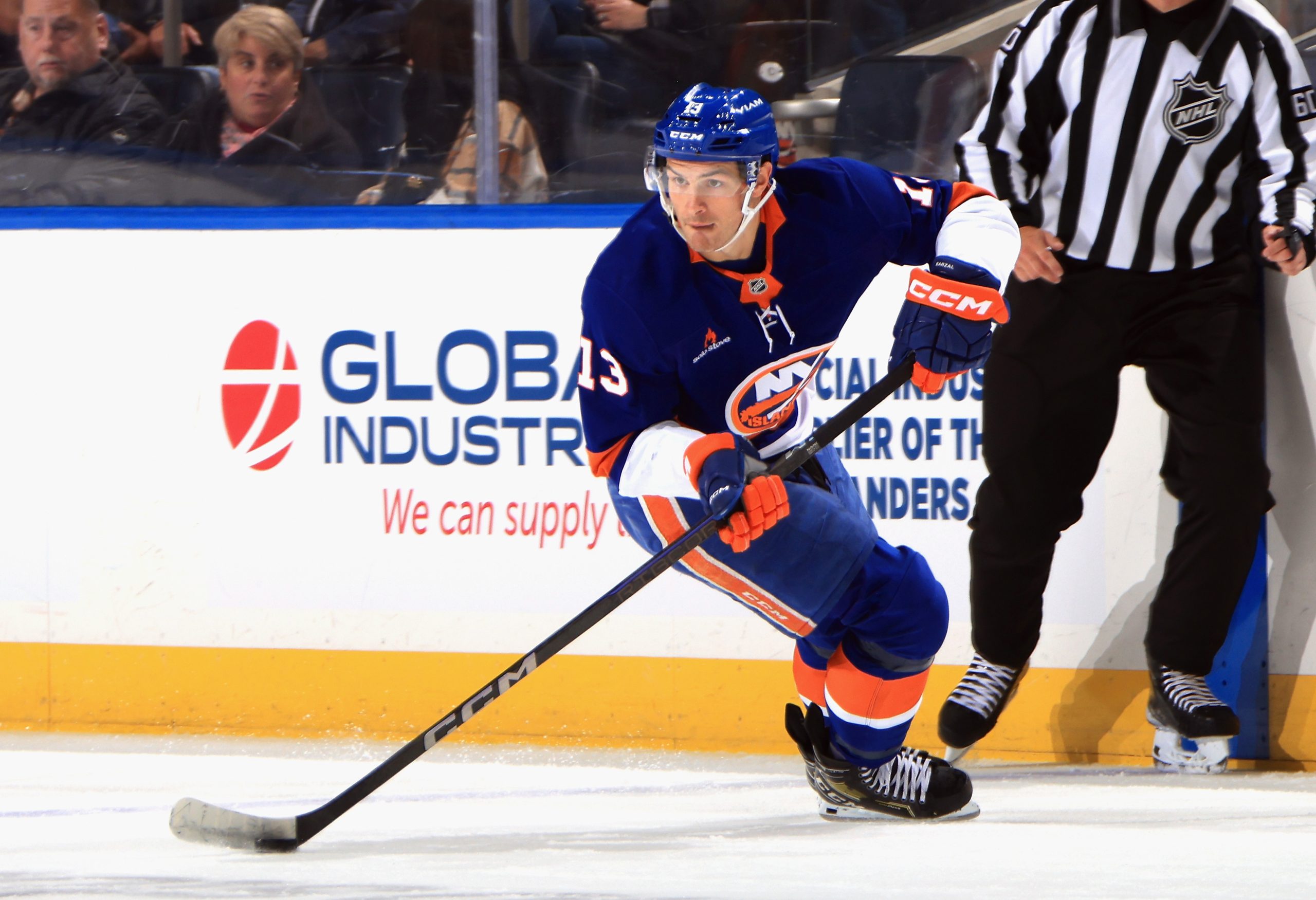
Mathew Barzal appeared in just 30 games for the Islanders last season. (Bruce Bennett / Getty Images)Mathew Barzal, New York Islanders
The details: Mathew Barzal is 28 and entering the third year of a max-length extension that runs through 2031 and carries a cap hit of $9.15 million.
The case that it’s a bad contract: Remember when Barzal was a legitimate stud? He debuted with a Calder-winning season that saw him score 85 points, a rookie total that only Sidney Crosby and Alexander Ovechkin have topped during the cap era. But since then, he’s had just one season north of 62 points, and last year he had just 20 points in 30 games. His stock has fallen so far that when Team Canada announced its orientation camp roster for next year’s Olympics, he wasn’t on it. That seems like a problem for a guy who carries the 11th highest cap hit among centers.
The case that it might be OK: He was injured for almost all of last year, so we can probably ditch those disappointing numbers. The year before that, he had 80 points, his best total since his rookie season. There’s a reason new Isles management made it clear Barzal wasn’t going anywhere. And while you don’t want to overplay the “cap is going up” card, we already covered how the center market is about to shift in the Pettersson section. When that happens, $9 million and change for a point-per-game guy shouldn’t seem like an issue.
Key comparables: Among similarly aged players, Barzal would rank well back of Sasha Barkov and Jack Eichel (both at $10 million), but they’re viewed as bargains. Closer comparisons would be guys like Sebastian Aho, Brayden Point and Dylan Larkin, who all carry cap hits within $600K of Barzal’s and have posted similar offensive numbers to his last healthy season.
The ruling: I don’t love it right now, but with five years in an evolving market and a return to good health hopefully in the mix, I’m not willing to say it’s bad. Check back in a year, though.
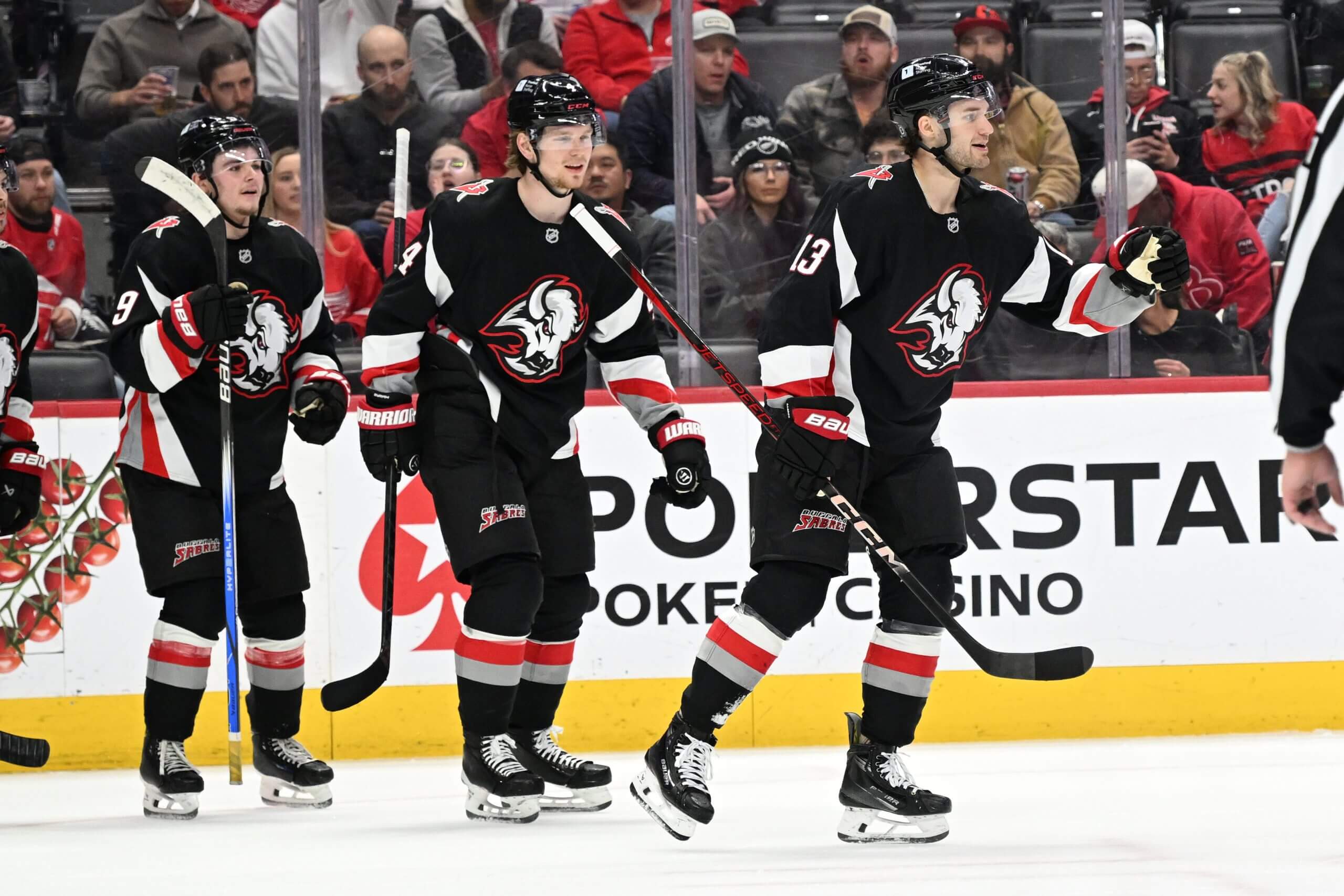
Josh Norris, right, played three games for the Sabres after the trade deadline. (Lon Horwedel / Imagn Images)Josh Norris, Buffalo Sabres
The details: Josh Norris is 26 and entering the fourth year of an eight-year deal he originally signed with the Senators in 2022, which carries a $7.95 million cap hit through 2030. The Sabres acquired him in a deal for Dylan Cozens at least year’s deadline which was not especially well-received.
The case that it’s a bad contract: Norris carries the highest cap hit of any Sabres forward, but is coming off consecutive seasons that saw his point total stuck in the 30s while his games played was in the 50s. Injuries have been a big part of his story, including missing all but eight games in 2022-23. He’s basically had one decent season in the NHL (a 35-goal, 55-point sophomore campaign in 2021-22) and has been both paid and hyped based on that single year. But three seasons and one team later, that year feels like an outlier for a disappointing player.
The case that it might be OK: Injuries are a two-way sword with this sort of debate. Yes, he has to stay healthy to earn his cap hit, and he hasn’t been able to. But that’s also why his numbers have been lackluster, and if he can get back to full health another 30-goal season seems realistic. He’s not a play-driver, but with a career shooting percentage of 18.1 (including two seasons north of 20), we can at least say that he has the potential to be an elite finisher, which is a hard skill to find in a center. And his teammates in Ottawa loved him.
It’s also worth noting Norris does not have any trade protection until next summer, and only a 10-team no-trade list after that, which gives the Sabres some flexibility if they need to reconsider the commitment. And he’ll be 31 when this deal expires, so unlike almost everyone else who shows up in Cap Court, the team isn’t on the hook for a bunch of write-off years at the end.
Key comparables: Norris slots in with similarly aged centers like Jack Hughes ($8 million) and Nick Suzuki ($7.85 million); that’s not exactly flattering, but those are also two contracts that are often viewed as solid bargains for their respective teams. Other comparisons would include the Blues duo of Robert Thomas and Jordan Kyrou, both at $8.125 million. And of course, Norris will be forever linked with Dylan Cozens, whose deal has the same number of years left but carries a cheaper $7.1 million hit.
The ruling: Putting aside who won or lost the trade, this contract feels like a risky bet for the Sabres, even as you can understand why they may have felt like they needed to make it. For now I’m ruling it a bad contract, but Norris will have a fast track to an appeal hearing if he can stay healthy enough to produce a big goal-scoring year.
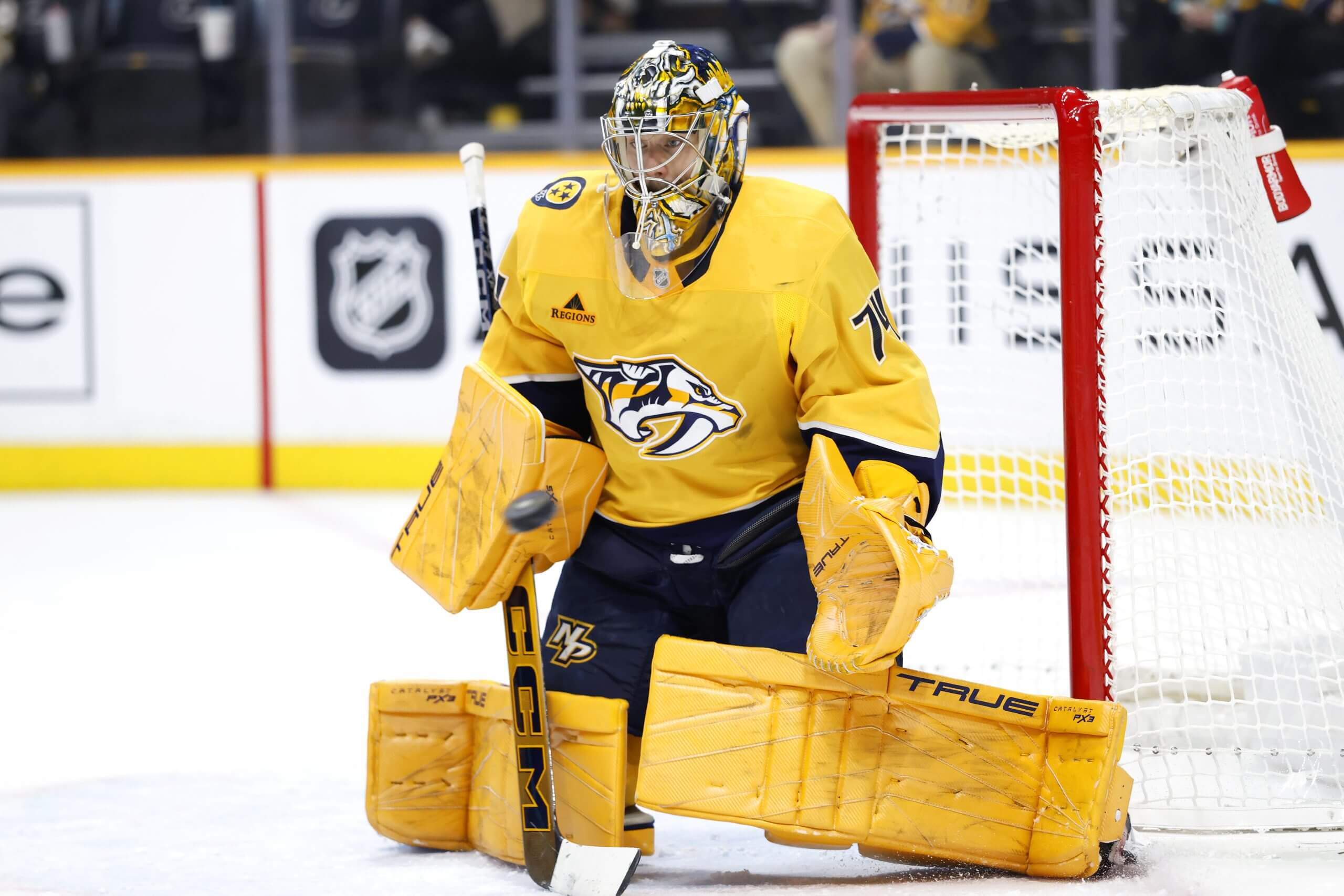
Juuse Saros spent four straight years in the top six of Vezina voting but struggled like the rest of the Predators in 2024-25. (Johnnie Izquierdo / Getty Images)Juuse Saros, Predators
The details: Juuse Saros is 30 and signed a max-length extension last summer that only kicks in this year, meaning it runs all the way through 2033. The cap hit is $7.74 million, with a full NMC until the final two years, upon which it becomes a 15-team no-trade list.
The case that it’s a bad contract: Saros was a bad goalie last year. Maybe that’s harsh, but it’s reality for a guy who finished the year at .895. Worse, it was the second year in a row that his save percentage dipped by over 10 points, meaning we can’t just hand-wave this away as goalies being weird. The Predators had a choice last summer – stick with Saros, or trade him to one of the several teams desperate for established goaltending and turn things over to blue-chip prospect Yaroslav Askarov. They decided to make a big-dollar gamble on the veteran and trade the kid, and one year later it sure looks like they bet wrong.
The case that it might be OK: First of all, this is Cap Court, not Trade Decisions With Hindsight Court, so whatever happened around last year’s extension doesn’t really matter. The Predators’ call in the crease made sense based on what they were trying to do at the time, and what’s done is done. More importantly for our purposes, Saros signed for what seemed like a discount, coming in under $8 million while knowing Igor Shesterkin was about to reset the market for top goalies to well north of $10 million. And Saros has been a top goalie, finishing in the top six in Vezina voting four years in a row from 2021 through 2024. Last year was a disaster for pretty much everyone in Nashville, but that doesn’t mean it’s the new normal for a guy who’s earned some benefit of the doubt.
Key comparables: Saros ranks tenth for goalie cap hit heading into next season. Among guys signed through at least 2030, he ranks sixth, and is kind of on his own – the three guys immediately ahead of him are Ilya Sorokin, Jeremy Swayman and Jake Oettinger at $8.25 million, and then a drop all the way down to Lukas Dostal at $6.5 million and Adin Hill at $6.25 million.
The ruling: I’m tempted to say “you never know with goalies” and call it a day. But that’s exactly it — you never really know, which is why committing to a max-length deal to a guy who’s already 30 is so risky. And while the cap is going up, there aren’t any studs in their 20s scheduled for new deals over the new few years, so the goalie market may be pretty much set. I’m kind of shocked to be saying this on a deal I didn’t mind at the time and under which Saros hasn’t even played a game yet, but I think this one might already have gone bad.
(Top photo of Juuse Saros, Dante Fabbro and Elias Pettersson: Bob Frid / USA Today)

